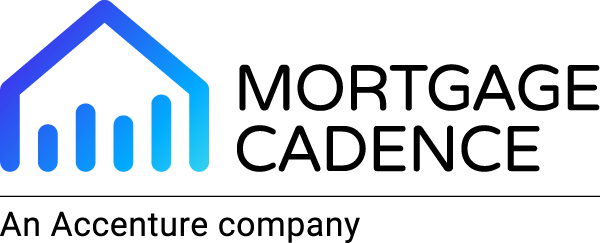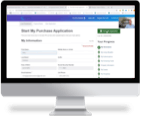In a
mortgage market where opportunities for growth are becoming harder to find, one
stands out quite well. Home owners are sitting on nearly $6 trillion in equity.
The best way for them to tap into this value? Home equity loans, especially
because rising rates have made cash-out refinance options unattractive.
Some
go so far as to predict a boom in home equity lending this
year. Others, most notably Bank of America, are suggesting that home equity lending may be flat this year.
However, a flat line indicates year-over-year stability which should encourage all
lenders, bank and non-bank alike, to look at this as an opportunity (including PennyMac, who jumped into HE last month.)
The
idea of ramping up another loan department may be daunting at a time when the cost to originate a mortgage is so high.
But the benefits will outweigh the risks, not to mention drive down production
costs in the long run. How? By utilizing the same, experienced teams on one
comprehensive platform, lenders will achieve a streamlined operation that
yields higher productivity and lower cost-to-close.
So what’s the key to ramping up your
home equity business?
According
to our high performance lenders, one key is putting all real estate lending
into the same department, operating on the same technology platform. It’s one
sure way of fully capitalizing on the opportunity home equity lending affords,
as it gives lenders multiple points of competitive differentiation.
Historically,
home equity has traditionally sat in the consumer lending department, separate
from mortgage lending. This made sense for many years, as home equity lending
was regulated differently than residential first mortgage lending. This has changed. The many and myriad
regulations promulgated since the housing crisis lassoed all real
estate-centered lending into the same corral. The change in regulatory
environment is one of several reasons high performance lenders have moved home equity
and first mortgage lending closer together. It eases the compliance burden
while simultaneously offering cross-training and career opportunities for
lending teams. The key to success lies in properly enabling people, process,
and technology all within real estate lending.
Benefits beyond compliance
Many
essential business decisions are driven by the absolute need to comply with
regulations. There are other viable decision-making factors as well. When home equity loans and first mortgage
loans are both originated on the same platform with loan data stored in the
same database of record, all aspects of origination become simpler. For
example, creating useful operational reports that track application age and
status from one single system enables lending teams to concentrate on getting
to the closing table rather than getting to reports that help them get to the
closing table.
A
single technology platform stores all relevant loan and borrower data in the
same way and in the same place, simplifying audit trails and compliance
reporting. This alone has been reason enough for many lenders to put all real
estate lending on the same platform. Also, with the right configuration and
digital services, automation and separate home equity workflows, lenders have
the ability to drive down costs and significantly reduce time to close. But the
benefits don’t end there.
Cross-selling opportunities increase
profitability
With lender profit margins tighter than ever,
it’s important to capitalize on every opportunity for increasing revenue and
reducing costs. Modern loan origination systems are making it possible to
accomplish both goals through increased cross-selling opportunities.
We
have long known that pulling together the customer data we already have in our
institutions will make us better at anticipating borrower needs. When we
originate on multiple technologies, pulling that information out of the silos
and into a common repository is difficult, expensive and, because sensitive
customer data is in motion during the process, risky.
All
of that goes away when we put all of our real estate lending on the same
platform. And today’s technology is smart enough to help mine customer data
that effortlessly increases your wallet share. The Mortgage Cadence Platform,
for instance, can automatically alert borrowers when they qualify for a HELOC
loan in addition to their mortgage. No manual reporting, no valuable loan
officer time wasted. With everything on the same system, cross-selling
opportunities abound.
Winning the customer satisfaction
game
Never
in the history of our industry has it been more important to provide a
satisfying experience to our home loan borrowers, be they first mortgage or
home equity borrowers. Borrowers will remember an exceptional experience, and
are therefore more likely to return for their next mortgage-related need.
A
key component of borrower satisfaction is timely information and education. We
know homeowners have questions when they contemplate taking out a loan against
their homes. When satisfactory information is not made available very quickly,
borrowers lose confidence and abandon the process.
When
home equity lending sits with the consumer lending arm of the business, the
lender’s real estate experts are spread across different departments, lessening
the opportunity for cohesive borrower cross-selling and communication. Putting
all real estate lending into one department solves this problem, combining
teams of experts into one department to be leveraged across first mortgages and
HELOCs, ultimately ensuring borrowers’ access to all subject matter experts
within one streamlined process.
While
moving home equity lending out of consumer lending and into the real estate
branch undoubtedly requires additional training, the ends justify the means
because you will immediately see an increase in borrower satisfaction. Team satisfaction, too. More lending options lead to increased career
opportunities.
Additionally, when borrowers can originate a first and second mortgage concurrently, the borrower experience is far superior to forcing them to go through the process twice on separate technology platforms that may look and feel jarringly different. The borrower does not have to submit documentation twice or communicate with separate teams who don’t share the customer’s previous experience with the lender. The fact that anyone in the department can speak to the borrower’s situation immediately, without taking time to merge profiles from separate departments, creates an immediate satisfaction lift. While this may have been difficult to accomplish with the technology platforms of the past, let us introduce you to a loan origination system that delivers all of these benefits, and a few more we’ll be happy to show you.



